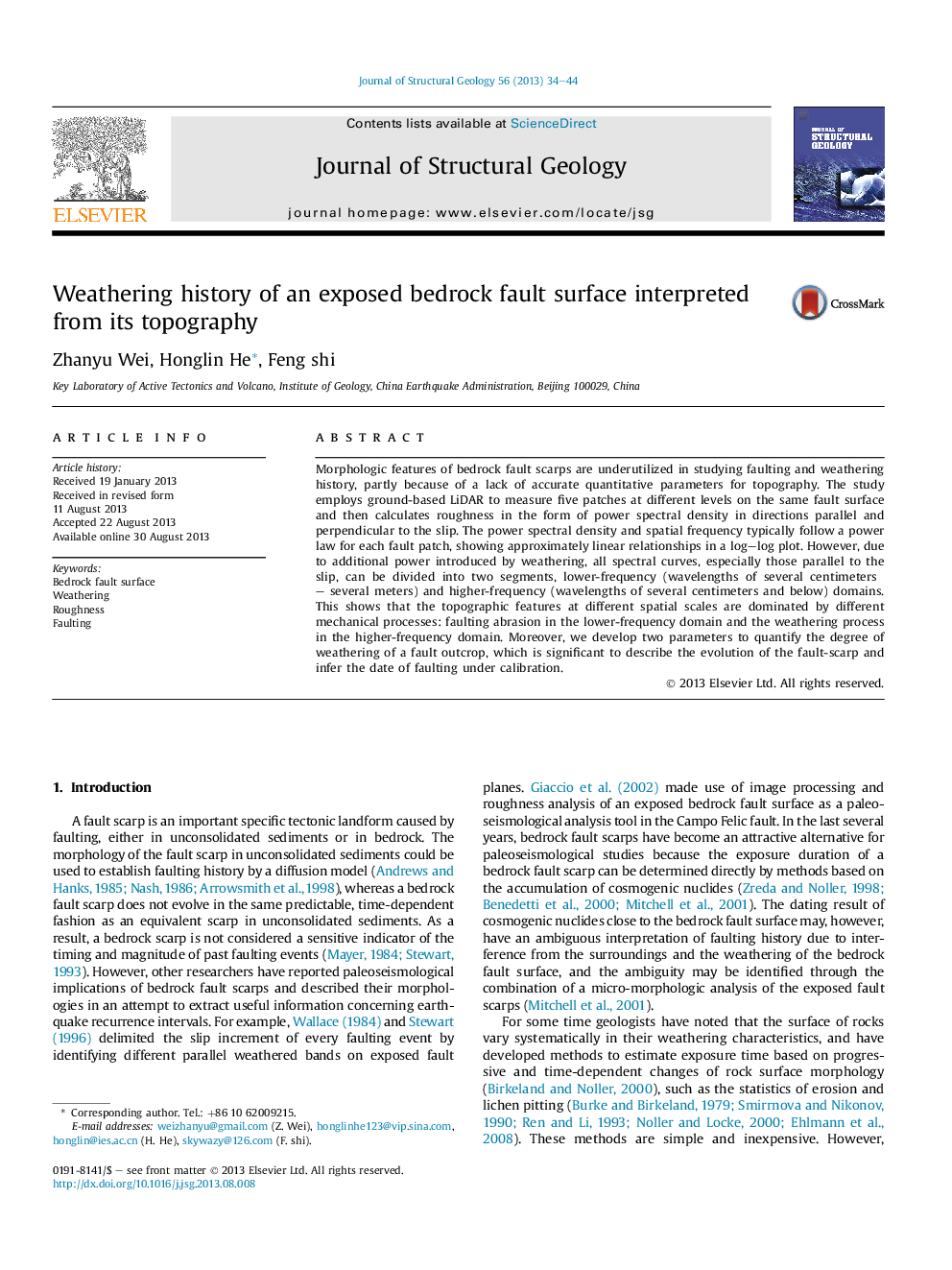| Article ID | Journal | Published Year | Pages | File Type |
|---|---|---|---|---|
| 6444979 | Journal of Structural Geology | 2013 | 11 Pages |
Abstract
Morphologic features of bedrock fault scarps are underutilized in studying faulting and weathering history, partly because of a lack of accurate quantitative parameters for topography. The study employs ground-based LiDAR to measure five patches at different levels on the same fault surface and then calculates roughness in the form of power spectral density in directions parallel and perpendicular to the slip. The power spectral density and spatial frequency typically follow a power law for each fault patch, showing approximately linear relationships in a log-log plot. However, due to additional power introduced by weathering, all spectral curves, especially those parallel to the slip, can be divided into two segments, lower-frequency (wavelengths of several centimeters - several meters) and higher-frequency (wavelengths of several centimeters and below) domains. This shows that the topographic features at different spatial scales are dominated by different mechanical processes: faulting abrasion in the lower-frequency domain and the weathering process in the higher-frequency domain. Moreover, we develop two parameters to quantify the degree of weathering of a fault outcrop, which is significant to describe the evolution of the fault-scarp and infer the date of faulting under calibration.
Keywords
Related Topics
Physical Sciences and Engineering
Earth and Planetary Sciences
Geology
Authors
Zhanyu Wei, Honglin He, Feng shi,
